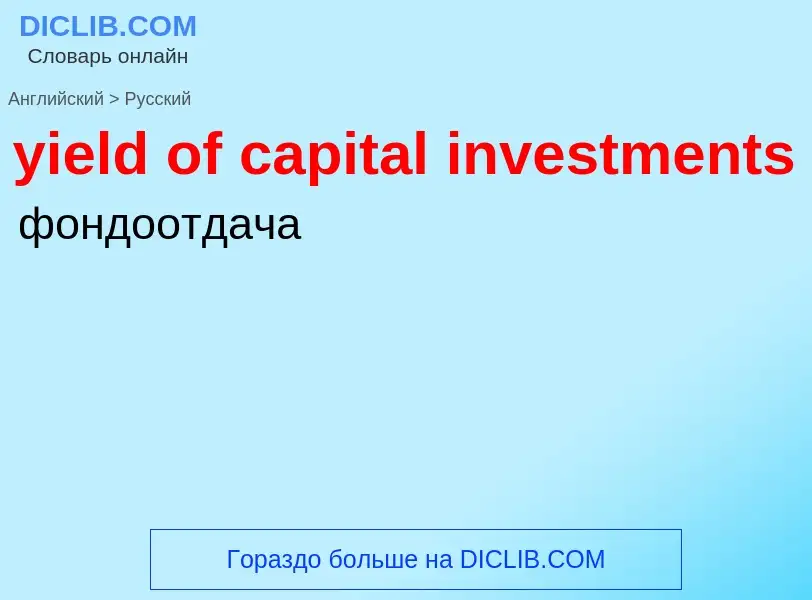Tradução e análise de palavras por inteligência artificial ChatGPT
Nesta página você pode obter uma análise detalhada de uma palavra ou frase, produzida usando a melhor tecnologia de inteligência artificial até o momento:
- como a palavra é usada
- frequência de uso
- é usado com mais frequência na fala oral ou escrita
- opções de tradução de palavras
- exemplos de uso (várias frases com tradução)
- etimologia
yield of capital investments - tradução para russo
Definição
.
Wikipédia
Fixed investment in economics is the purchasing of newly produced fixed capital. It is measured as a flow variable – that is, as an amount per unit of time.
Thus, fixed investment is the accumulation of physical assets such as machinery, land, buildings, installations, vehicles, or technology. Normally, a company balance sheet will state both the amount of expenditure on fixed assets during the quarter or year, and the total value of the stock of fixed assets owned.
Fixed investment contrasts with investments in labour, ongoing operating expenses, materials or financial assets. Financial assets may also be held for a fixed term (for example, bonds) but they are not usually called "fixed investment" because they do not involve the purchase of physical fixed assets. The more usual term for such financial investments is "fixed-term investments". Bank deposits committed for a fixed term such as one or two years in a savings account are similarly called "fixed-term deposits".
Statistical measures of fixed investment, such as provided by the Bureau of Economic Analysis in the United States, Eurostat in Europe, and other national and international statistical offices (e.g., the International Monetary Fund), are often considered by economists to be important indicators of longer-term economic growth (the growth of output and employment) and potential productivity.
The more fixed capital is used per worker, the more productive the worker can be, other things being equal. For example, a worker who tills the soil only with a spade is normally less productive than a worker who uses a tractor-driven plough to do the same work, because with a tractor one can plough more land in less time, and thus produce more in less time, even if a tractor costs more than a spade. Obviously one would not normally use a tractor to plough a small garden, but in large-scale farming the income earned using a tractor by far outweighs the expense of using a tractor. It is not economical to use a spade for large-scale ploughing, unless the labour is extremely cheap, and the supply of labour is plentiful.
The level of fixed investment by businesses also indicates something about the level of confidence that business owners or managers have about the ability to earn more income from sales in the next few years. The reasoning is that they would be unlikely to tie up additional capital in fixed assets for several years or more, unless they thought it would be a commercially viable proposition in the longer term. If there is too much uncertainty about whether their fixed investment will pay off, they are unlikely to engage in it.
In recent decades, the growth rate of fixed investment in the US, Europe and Japan was relatively low, but in China for example it is relatively high. Often the relativities are expressed as a ratio between gross fixed capital formation and GDP, or fixed investment per worker employed or per capita.

